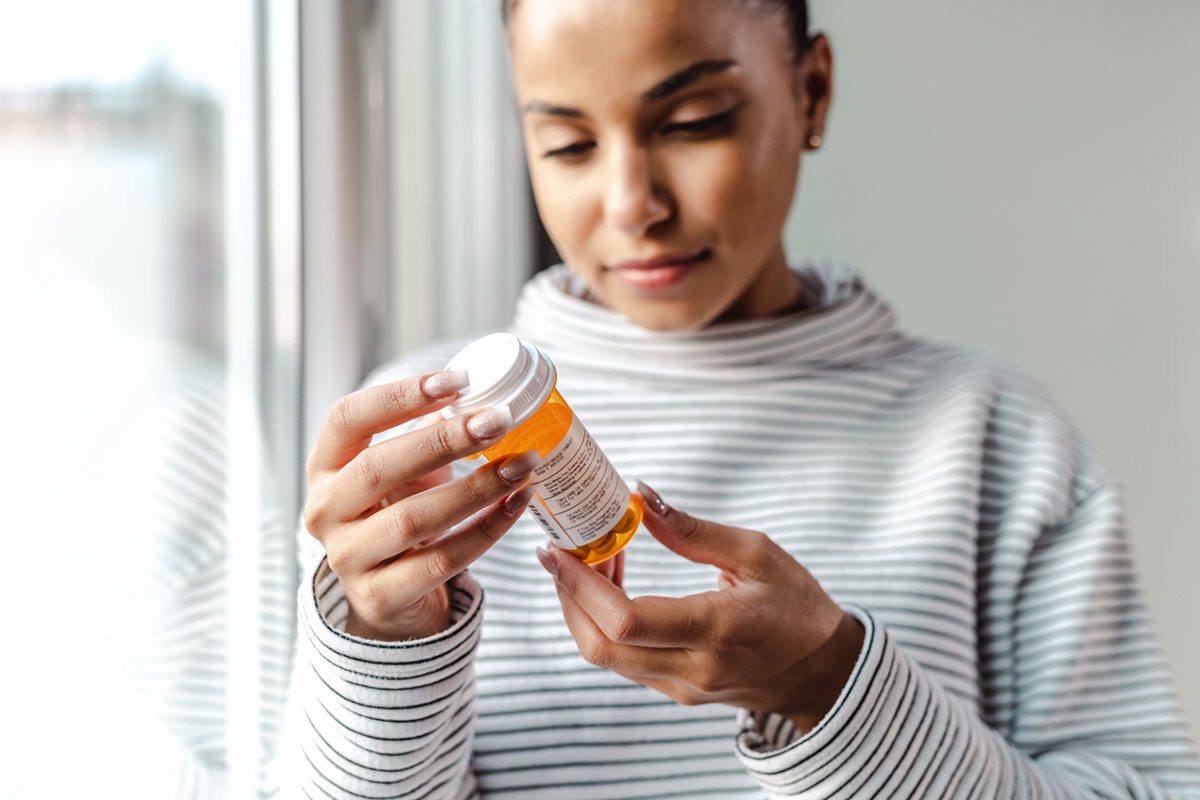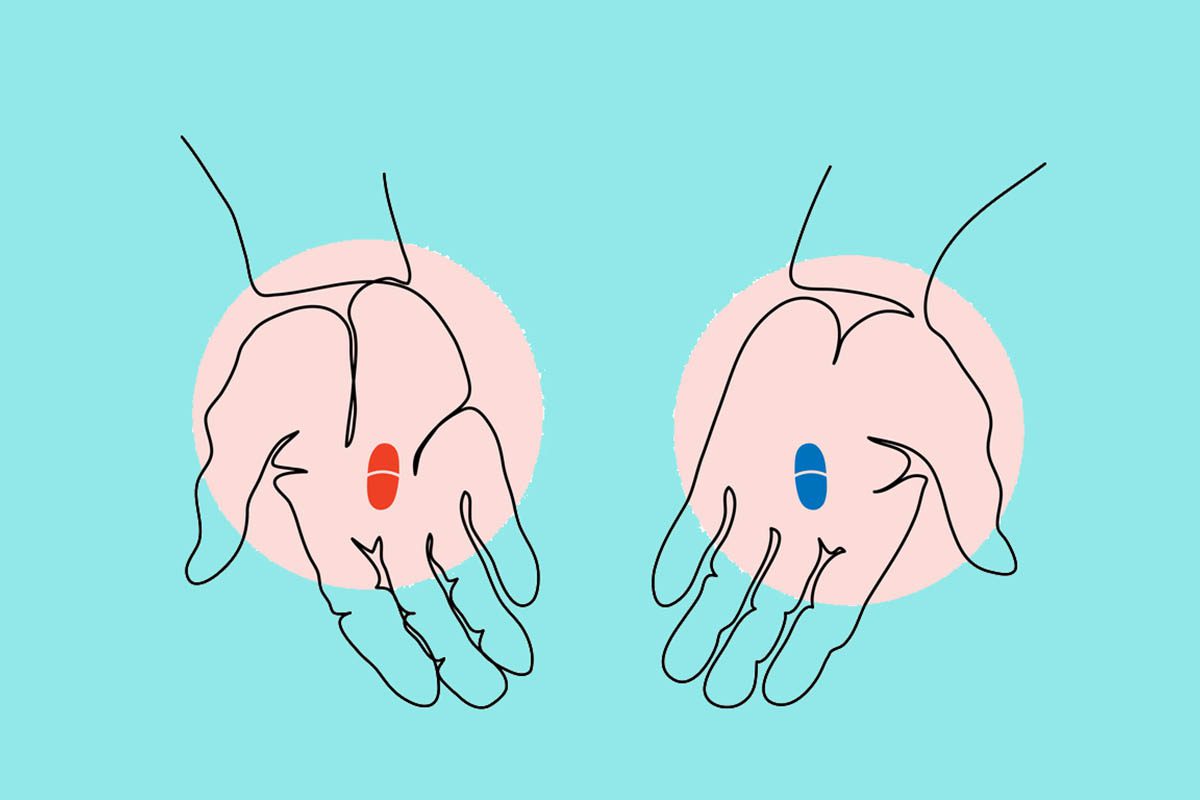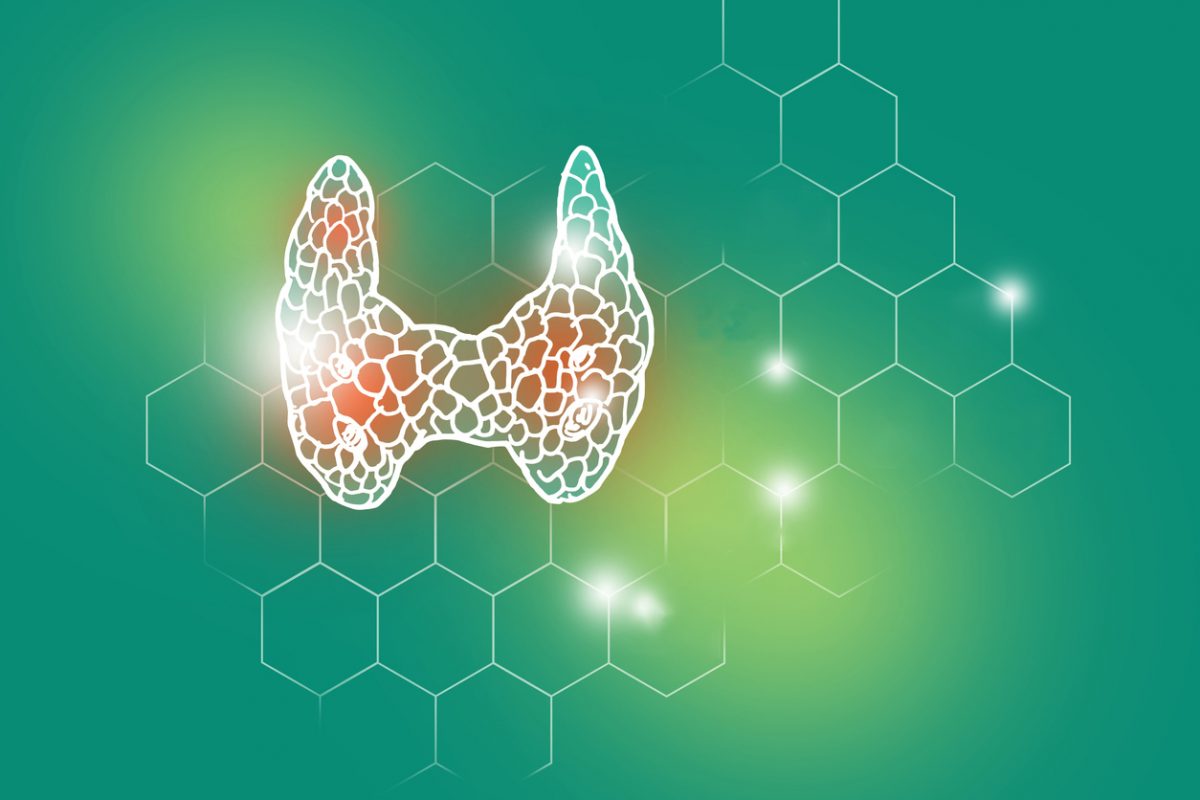
Monoamine Oxidase Inhibitors Revisited: What You Should Know
Monoamine oxidase inhibitors (MAOIs) have been dubbed the “secret weapon” of psychopharmacology for the treatment of depression.1 While pharmacology futurists await the arrival of so-called “triple reuptake inhibitors” as harbingers of the next generation of antidepressants, MAOIs—which simultaneously enhance serotonergic, noradrenergic, and dopaminergic transmission—have been available for decades. Elegant combination therapies for hard-to-treat depression often aim to increase central activity of all 3 monoamines (such as by combining a serotonin-norepinephrine reuptake inhibitor with a putative dopaminergic drug [eg, bupropion, amphetamine, methylphenidate, or pramipexole] or by pairing a dopamine agonist with a selective serotonin reuptake inhibitor [SSRI] plus a tricyclic antidepressant [TCA]). Or, more simply, one could utilize an MAOI to accomplish analogous pharmacodynamic goals.
Mechanisms
Schildkraut’s 2 original hypothesis that depression arises from relative deficiencies of catecholamines most likely oversimplifies the pathophysiology of depression; modern theories view depression as a disorder of neuronal plasticity and imbalanced neural circuitry. Nevertheless, altering monoaminergic tone remains relevant for understanding the presumed mechanisms of action for most antidepressants. MAOIs increase presynaptic outflow of monoamines by inhibiting their catabolism after presynaptic reuptake. Two MAO isozymes, A and B, differ in their substrates, potential psychotropic effects, and locations outside the central nervous system; MAO-A (found in brain and several gastrointestinal sites) catabolizes serotonin, norepinephrine, and dopamine (among other substrates), while MAO-B (found in brain and platelets) catabolizes dopamine but not serotonin or norepinephrine. The antiparkinsonian drug selegiline selectively inhibits MAO-B at low oral doses, showing minimal antidepressant properties; impractically high oral doses are needed to overcome selectivity to achieve antidepressant effects. Transdermal selegiline limits exposure of intestinal MAO-A to high concentrations of the inhibiting drug and avoids first-pass metabolism in the liver, thus averting the necessity of tyramine restrictions at a 6-mg/d dose while effectively inhibiting brain MAO-A and MAO-B enzyme.
Moclobemide, a reversible and selective inhibitor of MAO-A that is available outside the United States, also avoids the need for dietary tyramine restriction when dosed < 900 mg/d (since MAO-B remains available to catabolize tyramine) and appears well tolerated, but perceptions of its modest efficacy have limited enthusiasm for its wider use (see, for example, Lotufo-Neto et al3).
Efficacy
Although clinicians often view MAOIs as more difficult to prescribe than agents in other classes, there is little doubt about their efficacy. In bipolar depression, for example (where impactful treatments are few and far between), response rates with tranylcypromine have been reported to exceed 80%, and this agent may be more efficacious than TCAs such as imipramine, particularly in patients with anergic, motor-retarded features.4 MAOIs also may yield better antidepressant efficacy than TCAs in chronic depression and dysthymia.5 In refractory major depression, response rates of at least 40%-50% have been reported for both tranylcypromine and phenelzine, with comparable head-to-head efficacy.6 It was therefore surprising that, in the Sequenced Treatment Alternatives to Relieve Depression (STAR*D)trials, patients randomly assigned to tranylcypromine (a fourth-level intervention following nonresponse to an SSRI and 2 other interventions) obtained a meager 6.9% remission rate.7 However, low mean dosing of tranylcypromine in that study (< 40 mg/d) quite likely underestimated optimal MAOI benefits for advanced forms of treatment-resistant depression.
Studies from the 1970s and 1980s made MAOIs virtually synonymous with treatment for atypical depression, with reports of superiority to TCAs (reviewed by Henkel et al8). MAOIs are also often thought of for anxious depression on the basis of an older literature comparing phenelzine with tricyclics such as amitriptyline.9,10 Much of this literature focused on pre-DSM-III constructs such as “neurotic” or “reactive” depressions that may also relate to atypical depression. Excitement surrounding such apparent differential therapeutics was largely dissipated by the rapid ascension of SSRIs, which essentially replaced TCAs as the antidepressants of first choice by the early 1990s. Whereas MAOIs were clearly superior to TCAs, there was little reason to view them as superior to SSRIs, which were substantially safer.
Dosing Logistics
Tranylcypromine and isocarboxazid are both typically begun at dosages of 10 mg twice daily with increases of 10-20 mg/wk to a usual maximal dose of 60 mg/d. Usual doses are 40-60 mg/d, although much higher doses have been reported in patients with difficult-to-treat depressions. For example, tranylcypromine doses up to 170 mg/d were used in one case series of treatment-refractory depression (Amsterdam and Berwish11; mean dose for responders was 112 ± 16 mg/d); however, because the safety and efficacy of such “heroic” doses are anecdotal and not confirmed by controlled trials, such strategies may best be pursued by clinicians who have considerable experience using MAOIs. Phenelzine is usually begun at 15 mg 1 to 3 times daily; a usual therapeutic target range is 45-75 mg/d but occasionally up to 90 mg/d. Transdermal selegiline is dosed at 6, 9, or 12 mg/d; all 3 doses require avoidance of concomitant serotonergic or noradrenergic psychotropics to minimize risks for serotonin syndrome or pressor effects, although, as noted above, dietary tyramine restrictions are unnecessary at doses of 6 mg/d. The sole published randomized comparative dosing study12 of transdermal selegiline found no differences in outcome across the 3 available doses, although subsequent anecdotal experiences raise the question of whether higher doses may sometimes confer greater benefit.
Adverse Effects
Despite popular perceptions that MAOIs have “serious” side effects, the most common adverse effects of oral MAOIs are similar to those of SSRIs, namely, weight gain, sexual dysfunction, and nonspecific central nervous system effects (eg, dizziness, headache, insomnia). The most common adverse effect of transdermal selegiline reported in US Food and Drug Administration registration trials was skin irritation at the application site. Active drug did not differ from placebo in rates of weight gain or sexual dysfunction in those short-term studies.13
Manufacturers of MAOIs advise discontinuation of these agents at least 10 days before administration of general anesthesia (eg, elective surgery), but extensive clinical experience indicates no adverse cardiovascular effects from continuing MAOIs during general anesthesia in surgery14 or electroconvulsive therapy.15 Opiates that possess serotonin reuptake properties (such as meperidine, tramadol, and methadone) carry known risks for precipitating serotonin syndrome during MAOI coadministration, although nonserotonergic opiates (eg, morphine, codeine, oxycodone) would not be expected to pose that hazard.16
At one time, for suspected hypertensive crises, the recommendation was often made for patients to carry a 10-mg capsule of nifedipine (with the suggestion to bite and then swallow it, although sublingual absorption appears poor).17 Systematic studies have challenged the safety, efficacy, and wisdom of this practice,17 leading some experts to instead advise patients to measure their blood pressure if a severe headache occurs (eg, using a home sphygmomanometer) and present to an emergency department should significant hypertension occur. Tranylcypromine doses exceeding 30 mg/d also have been associated with orthostatic hypotension,18 and this may be a dose-related adverse effect for all MAOIs.
The Lowdown on Tyramine
MAO catabolizes the dietary amino acid tyramine. Buildup of tyramine—as found in aged meats and cheeses—can cause release of norepinephrine, with consequent rapid increases in blood pressure (“tyramine crisis”). Standard tyramine “pressor tests” employ 50-mg capsules of tyramine given orally and in the fasting state (which maximizes tyramine bioavailability). Oral MAOIs, except for moclobemide, consistently produce significant blood pressure elevation at tyramine doses well below 50 mg in this test. At the 6-mg/d dose of transdermal selegiline, “pressor tests” employing the tyramine 50-mg capsule given in the fasting state produced no blood pressure elevation (defined as a rise of 30 mm Hg), whereas at the 12-mg/d dose, this blood pressure rise occurred in 1 or 2 subjects (with no distress),19 thereby conservatively leading to a dietary tyramine restriction in the drug labeling for the 9- and 12-mg/d doses.
Early MAOI diets unnecessarily restricted a number of foods thought to contain clinically important levels of tyramine, including chocolate, avocados, caffeine, and yogurt. In fact, very few foods have sufficient tyramine content to approach the 50-mg threshold of absorbed tyramine. Shulman and colleagues20-23 measured actual tyramine content across a wide range of suspected food and found no clinically significant levels of tyramine (ie, > 6 mg) in freshly sliced cold meats, fresh chicken livers, smoked salmon, pickled herring, or various commercial pizzas prepared with non-aged meats (including fresh pepperoni) and part-skim mozzarella cheese (< 30 g). (Bear in mind that “fresh” meats, once opened and left in a refrigerator, eventually cease being fresh.) Tyramine content of soy sauce varies considerably by brand and quantity, and some may be safely ingested in low amounts (< 1-2 tablespoons).
Overdose Concerns
Many psychiatrists hesitate to prescribe MAOIs because of their potential for lethality in overdose (notably, in depressed patients at risk for suicide), despite their potential lifesaving benefits for severe depression. In our experience, this risk-benefit ratio is best managed not by avoiding MAOIs but, rather, by assessing and discussing safety concerns in a direct and ongoing fashion when prescribing MAOIs, engaging caregivers (when appropriate) with regard to medication storage and administration, and dispensing drug quantities that are no higher than necessary during treatment for acute episodes. Said another way, there might well be substantially fewer cases of treatment-resistant depression if more doctors were able and willing to prescribe fully therapeutic doses of MAOIs.
Concomitant Psychotropics
A key obstacle for integrating MAOIs often involves restrictions about safe cotherapies and drug washout periods. MAOI coadministration with serotonergic drugs (eg, SSRIs, buspirone, triptans, and dextromethorphan) poses risks for serotonin syndrome, while noradrenergic drugs, traditional stimulants (eg, amphetamine, methylphenidate), and pressors (eg, pseudoephedrine) theoretically can cause hypertensive crises. There are numerous medications reported as being “contraindicated” with MAOIs mainly on the basis of case reports (eg, serotonin syndrome with concomitant cyclobenzaprine), class overgeneralizations (eg, nonserotonergic opiates; see Adverse Effects), or theoretical grounds (eg, carbamazepine and perphenazine resemble the 3-ring structure of tricyclics, but neither has been associated with adverse effects during MAOI cotherapy, and, despite the potential pressor effects of pseudoephedrine and phenylpropanolamine, cardiovascular safety has been demonstrated for each of these in combination with transdermal selegiline in healthy volunteers24).
With the exception of moclobemide, MAOIs irreversibly inhibit MAO; they bind to (and inactivate) the enzyme, which takes approximately 2 weeks to regenerate after cessation of treatment with a drug that irreversibly inhibits it. Additionally, a minimum of 5 half-lives must elapse after a monoaminergic antidepressant (such as an SSRI or serotonin-norepinephrine reuptake inhibitor) is stopped in preparation to begin an MAOI—which for most antidepressants other than fluoxetine means waiting about 5 days after stopping a prior agent before beginning treatment with an MAOI. (The combined half-life of fluoxetine and its metabolite norfluoxetine necessitates an approximate 5-week washout.) Some antidepressants occasionally require gradual tapering off to minimize serotonergic discontinuation syndromes, in turn posing practical limitations in urgent situations. Regrettably, drug washouts done in preparation to begin a new therapy may be incompatible with the external demands of modern inpatient settings. Nevertheless, such time-intensive goals should not be misconstrued as anything other than providing the most appropriate treatment.
Fortunately, there are numerous psychotropic agents with potential antidepressant efficacy that pose no contraindication to MAOIs that can be “bridge” treatments during pre- or post-MAOI washout periods—pharmacotherapies that may themselves yield antidepressant efficacy (possibly averting the need for an MAOI trial) or otherwise serve as viable adjuncts to continue through an adequate trial once treatment with an MAOI is subsequently begun. Such agents include any first- or second-generation antipsychotics, lithium, lamotrigine, divalproex, thyroid hormone, pramipexole, riluzole, l-methylfolate, omega-3 fatty acids, and the wakefulness-promoting agents modafinil and armodafinil. Even amitriptyline has preliminarily been described as a safe and effective cotherapy after incomplete response to phenelzine.25 With appropriate monitoring, any of these compounds may represent a safe, feasible, and novel MAOI augmentation strategy after partial response, making MAOIs an eminently viable and potent therapeutic weapon that need not be kept “secret.”
Author affiliations: Department of Psychiatry, Icahn School of Medicine at Mount Sinai, New York, New York, and Affective Disorders Research Program, Silver Hill Hospital, New Canaan, Connecticut (Dr Goldberg); and Department of Psychiatry, Perelman School of Medicine, University of Pennsylvania, Philadelphia (Dr Thase).
Potential conflicts of interest: Dr Goldberg has been a consultant for Mylan and WebMD; has received honoraria from MedScape and WebMD; has served on the speakers/advisory boards of AstraZeneca, Merck, Novartis, Sunovion, and Mylan; and has received royalties from American Psychiatric Publishing. Dr Thase has been an advisor/consultant to Alkermes, AstraZeneca, Bristol-Myers Squibb, Eli Lilly, Dey, Forest, Gerson Lehman, GlaxoSmithKline, Guidepoint Global, H. Lundbeck, MedAvante, Merck (formerly Schering Plough and Organon), Neuronetics, Novartis, Otsuka, Ortho-McNeil, Pamlab, Pfizer, Shire, Sunovion, Supernus, Takeda, and Transcept; has received grant support from Agency for Healthcare Research and Quality, Eli Lilly, Forest, GlaxoSmithKline, National Institute of Mental Health, Otsuka, and Sepracor; has served on the speakers bureaus of AstraZeneca, Bristol-Myers Squibb, Dey, Eli Lilly, Merck, and Pfizer (formerly Wyeth Ayerst); has equity holdings in MedAvante; and has received royalties from American Psychiatric Foundation, Guilford Publications, and Herald House.
Funding/support: None reported.
Corresponding author: Joseph F. Goldberg, MD, 128 East Ave, Norwalk, CT 06851 ([email protected]).
References
1. Stahl SM, Felker A. CNS Spectr. 2008;13(10):855-870. PubMed
2. Schildkraut JJ. Am J Psychiatry. 1965;122(5):509-522. PubMed
3. Lotufo-Neto F, Trivedi M, Thase ME. Neuropsychopharmacology. 1999;20(3):226-247. PubMed doi:10.1016/S0893-133X(98)00075-X
4. Himmelhoch JM, Thase ME, Mallinger AG, et al. Am J Psychiatry. 1991;148(7):910-916. PubMed
5. Vallejo J, Gasto C, Catalan R, et al. Br J Psychiatry. 1987;151(5):639-642. PubMed doi:10.1192/bjp.151.5.639
6. Birkenhäger TK, van den Broek WW, Mulder PG, et al. J Clin Psychiatry. 2004;65(11):1505-1510. PubMed doi:10.4088/JCP.v65n1110
7. McGrath PJ, Stewart JW, Fava M, et al. Am J Psychiatry. 2006;163(9):1531-1541. PubMed doi:10.1176/appi.ajp.163.9.1531
8. Henkel V, Mergl R, Allgaier AK, et al. Psychiatry Res. 2006;141(1):89-101. PubMed doi:10.1016/j.psychres.2005.07.012
9. Paykel ES, Rowan PR, Parker RR, et al. Arch Gen Psychiatry. 1982;39(9):1041-1049. PubMed doi:10.1001/archpsyc.1982.04290090035008
10. Mountjoy CQ, Roth M, Garside RF, et al. Br J Psychiatry. 1977;131(5):486-492. PubMed doi:10.1192/bjp.131.5.486
11. Amsterdam JD, Berwish NJ. Pharmacopsychiatry. 1989;22(1):21-25. PubMed doi:10.1055/s-2007-1014572
12. Feiger AD, Rickels K, Rynn MA, et al. J Clin Psychiatry. 2006;67(9):1354-1361. PubMed doi:10.4088/JCP.v67n0905
13. Parnate [tranylcypromine] package insert. Research Triangle Park, NC: GlaxoSmithKline; 2010.
14. el-Ganzouri AR, Ivankovich AD, Braverman B, et al. Anesth Analg. 1985;64(6):592-596. PubMed
15. Naguib M, Koorn R. CNS Drugs. 2002;16(4):229-247. PubMed doi:10.2165/00023210-200216040-00003
16. Gillman PK. Br J Anaesth. 2005;95(4):434-441. PubMed doi:10.1093/bja/aei210
17. Grossman E, Messerli FH, Grodzicki T, et al. JAMA. 1996;276(16):1328-1331. PubMed doi:10.1001/jama.1996.03540160050032
18. Cockhill LA, Remick RA. Can J Psychiatry. 1987;32(9):803-808. PubMed
19. Azzaro AJ, VanDenBerg CM, Blob LF, et al. J Clin Pharmacol. 2006;46(8):933-944. PubMed doi:10.1177/0091270006289852
20. Shulman KI, Walker SE, MacKenzie S, et al. J Clin Psychopharmacol. 1989;9(6):397-402. PubMed doi:10.1097/00004714-198912000-00002
21. Shulman KI, Walker SE. J Clin Psychiatry. 1999;60(3):191-193. PubMed doi:10.4088/JCP.v60n0308
22. Walker SE, Shulman KI, Tailor SA, et al. J Clin Psychopharmacol. 1996;16(5):383-388. PubMed doi:10.1097/00004714-199610000-00007
23. Gardner DM, Shulman KI, Walker SE, et al. J Clin Psychiatry. 1996;57(3):99-104. PubMed
24. Azzaro AJ, VanDenBerg CM, Ziemniak J, et al. J Clin Psychopharmacol. 2007;47:978-990. PubMed
25. McGrath PJ, Stewart JW, Nunes EN, et al. J Clin Psychiatry. 1994;55(8):336-339. PubMed
J Clin Psychiatry 2013;74(2):189-191 (doi:10.4088/JCP.12ac08299)
© Copyright 2013 Physicians Postgraduate Press, Inc.





